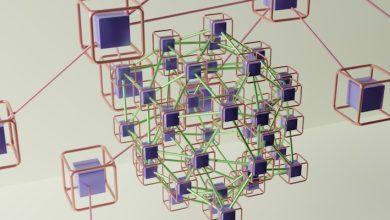Zilliqa (ZIL): The High-Throughput Blockchain

- Introduction to Zilliqa (ZIL)
- The innovative consensus algorithm of Zilliqa
- How Zilliqa achieves high throughput
- The scalability solution of Zilliqa
- Zilliqa’s partnerships and use cases
- The future potential of Zilliqa
Introduction to Zilliqa (ZIL)
Zilliqa (ZIL) is a high-throughput blockchain platform that aims to address the scalability issues faced by many existing blockchains. With its innovative sharding technology, Zilliqa is able to process a high number of transactions per second, making it ideal for applications requiring high throughput.
One of the key features of Zilliqa is its use of sharding, which divides the network into multiple smaller groups of nodes called shards. This allows Zilliqa to process transactions in parallel, significantly increasing its throughput. As a result, Zilliqa is able to achieve a high level of scalability without compromising on security or decentralization.
In addition to its scalability, Zilliqa also offers a high degree of security through its use of a hybrid consensus mechanism known as Practical Byzantine Fault Tolerance (PBFT). This ensures that transactions on the network are secure and tamper-proof, providing users with peace of mind when using the platform.
Overall, Zilliqa is a promising blockchain project that is pushing the boundaries of what is possible in terms of scalability and throughput. With its innovative technology and strong focus on security, Zilliqa is well-positioned to become a leading blockchain platform in the years to come.
The innovative consensus algorithm of Zilliqa
The innovative consensus algorithm of Zilliqa sets it apart from other blockchain platforms. Zilliqa uses a technique known as sharding to increase the network’s throughput and scalability. By dividing the network into smaller groups of nodes called shards, Zilliqa can process transactions in parallel, significantly improving the speed of the network.
One of the key features of Zilliqa’s consensus algorithm is its use of Proof of Work (PoW) to establish identities and prevent spam attacks. However, unlike traditional PoW blockchains, Zilliqa only uses PoW for sybil resistance and not for reaching consensus on transactions. Instead, Zilliqa uses a unique consensus mechanism called Practical Byzantine Fault Tolerance (PBFT) to agree on the order of transactions within each shard.
Another important aspect of Zilliqa’s consensus algorithm is its smart contract platform, which allows developers to create decentralized applications (dApps) on the network. Zilliqa’s smart contracts are written in a language called Scilla, which is designed to be more secure and easier to audit than other smart contract languages.
Overall, Zilliqa’s innovative consensus algorithm and focus on scalability make it a promising blockchain platform for the future. With its high throughput and secure smart contract platform, Zilliqa has the potential to revolutionize the way we think about blockchain technology.
How Zilliqa achieves high throughput
Zilliqa achieves high throughput through its innovative sharding technology. Sharding divides the network into smaller groups, or shards, which can process transactions in parallel. This significantly increases the network’s capacity to handle a large number of transactions simultaneously.
By spreading the workload across multiple shards, Zilliqa can achieve high throughput without compromising on security or decentralization. Each shard processes a subset of transactions independently, and the results are then combined to form a single blockchain. This approach allows Zilliqa to scale effectively as the network grows, without sacrificing speed or efficiency.
In addition to sharding, Zilliqa uses a hybrid consensus mechanism called Practical Byzantine Fault Tolerance (PBFT). This consensus algorithm ensures that transactions are confirmed quickly and securely, further enhancing the network’s throughput. PBFT strikes a balance between decentralization and efficiency, making it ideal for high-performance blockchain applications like Zilliqa.
Overall, Zilliqa’s combination of sharding and PBFT allows it to achieve unparalleled levels of throughput compared to traditional blockchains. This innovative approach positions Zilliqa as a leading contender in the race to build scalable and efficient blockchain solutions for the future.
The scalability solution of Zilliqa
Zilliqa’s scalability solution is one of the key features that sets it apart from other blockchain platforms. By utilizing a technique known as sharding, Zilliqa is able to process a high number of transactions in parallel. This means that as the network grows, the throughput of the platform increases as well, making it ideal for applications that require high transaction speeds.
Sharding works by dividing the network into smaller groups of nodes, called shards, which are responsible for processing a subset of the transactions. This allows Zilliqa to scale efficiently as more nodes join the network, without compromising on security or decentralization. In addition, Zilliqa uses a consensus mechanism called Practical Byzantine Fault Tolerance (PBFT), which ensures that all transactions are validated correctly.
Overall, Zilliqa’s scalability solution makes it a promising option for developers looking to build decentralized applications that require high throughput. With its innovative approach to sharding and PBFT consensus, Zilliqa is well-positioned to handle the demands of the modern blockchain ecosystem and provide a reliable platform for a wide range of use cases.
Zilliqa’s partnerships and use cases
Zilliqa has established numerous partnerships and collaborations across various industries, showcasing the versatility and applicability of its high-throughput blockchain technology. These partnerships have enabled Zilliqa to explore a wide range of use cases, from decentralized finance (DeFi) to supply chain management and digital advertising.
One notable partnership is with Switcheo, a decentralized cryptocurrency exchange built on the Zilliqa blockchain. This collaboration has facilitated seamless trading of digital assets while ensuring high security and efficiency. Additionally, Zilliqa has partnered with Xfers, a leading payment processing platform in Southeast Asia, to enable fast and secure cross-border transactions.
In the realm of decentralized finance, Zilliqa has joined forces with various DeFi projects such as Unizen and Moonlet. These partnerships have allowed users to access a diverse range of financial services, including lending, borrowing, and staking, all powered by Zilliqa’s scalable blockchain infrastructure.
Furthermore, Zilliqa has made significant inroads in the gaming industry through partnerships with companies like Animoca Brands and Infinito. By leveraging Zilliqa’s high-throughput capabilities, these gaming platforms have been able to offer seamless in-game transactions and enhanced gameplay experiences to users.
Overall, Zilliqa’s partnerships and use cases demonstrate the widespread adoption and utility of its blockchain technology across different sectors. As the ecosystem continues to grow and evolve, Zilliqa remains at the forefront of innovation, driving forward the adoption of blockchain technology in real-world applications.
The future potential of Zilliqa
The future potential of Zilliqa lies in its high-throughput blockchain network, which has the capacity to process transactions quickly and efficiently. With its innovative sharding technology, Zilliqa can scale to meet the demands of a growing user base, making it a promising platform for decentralized applications. In addition, Zilliqa’s focus on security and smart contract functionality positions it as a competitive player in the blockchain space. As more developers and users recognize the advantages of Zilliqa, the platform is poised for continued growth and adoption in the coming years. Overall, Zilliqa’s unique features and commitment to scalability make it a standout option for those looking to leverage blockchain technology for various applications.



